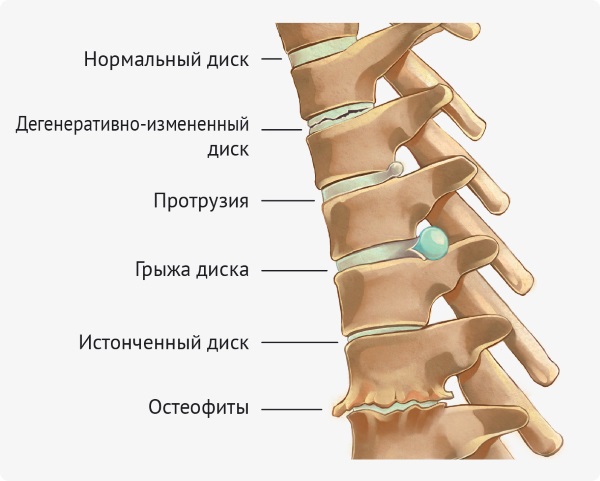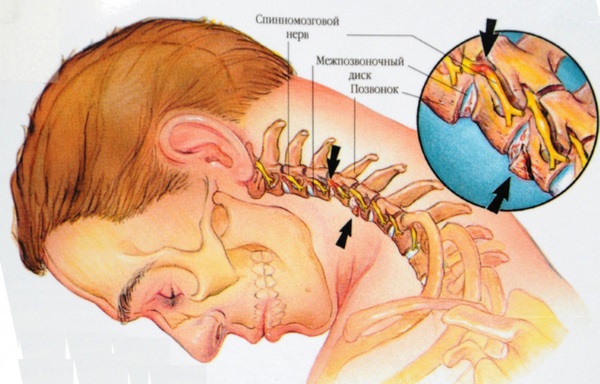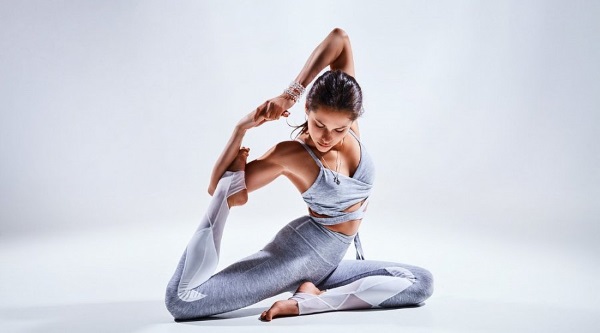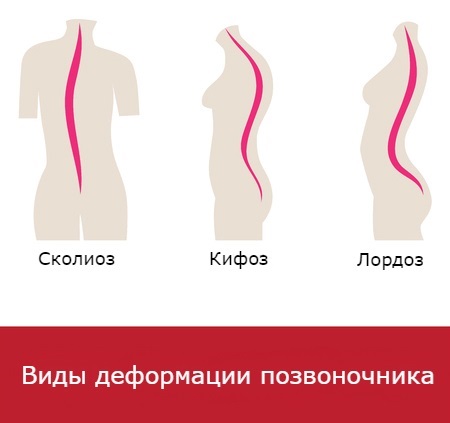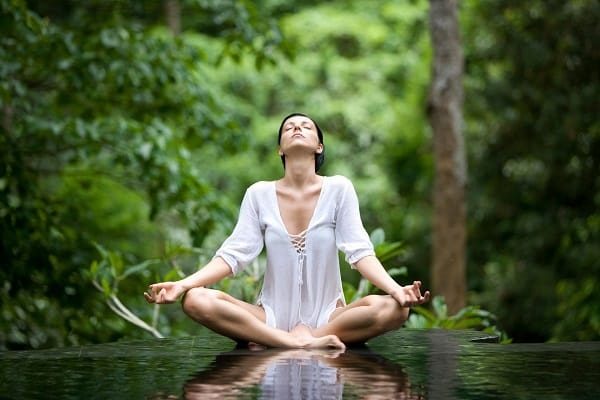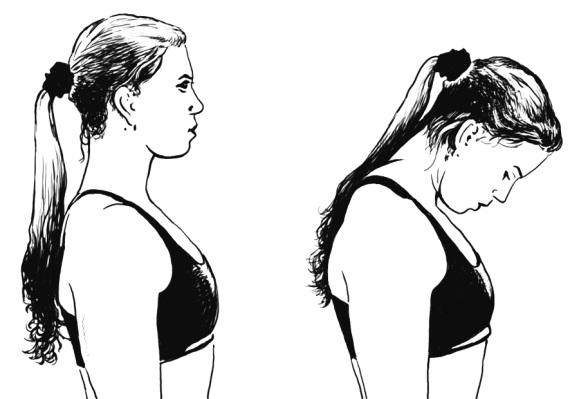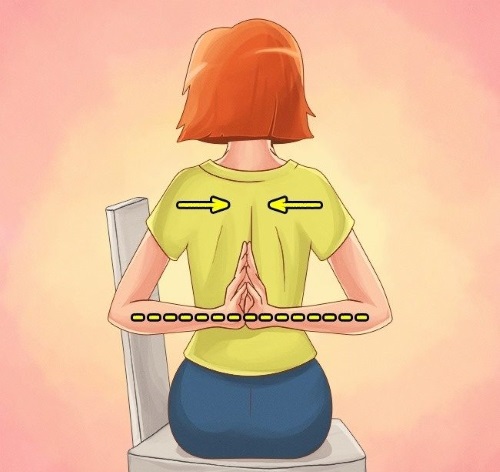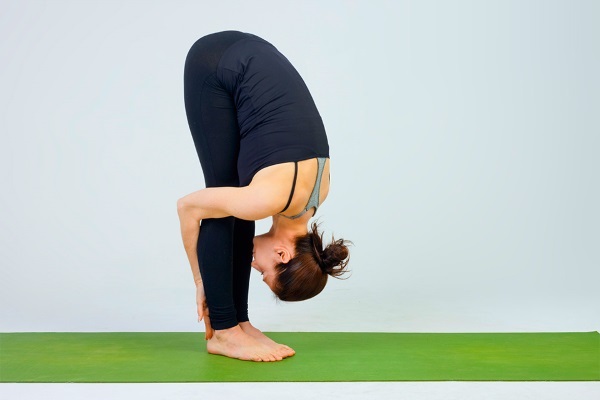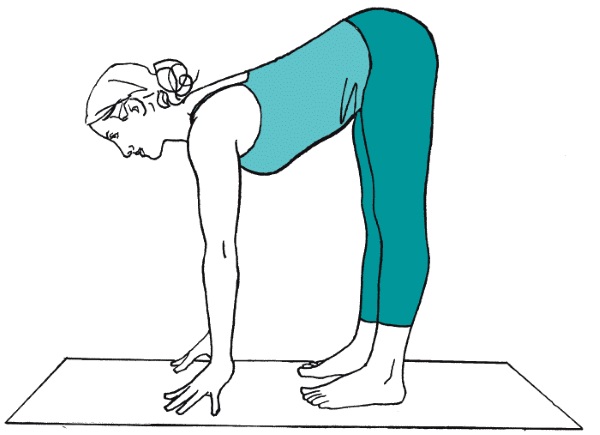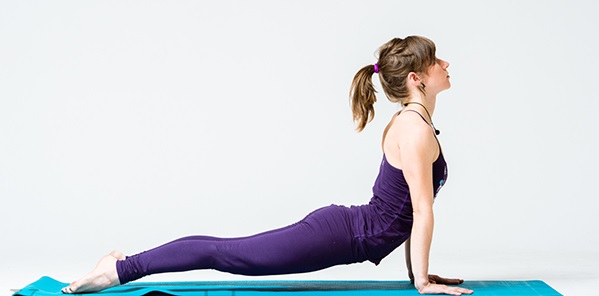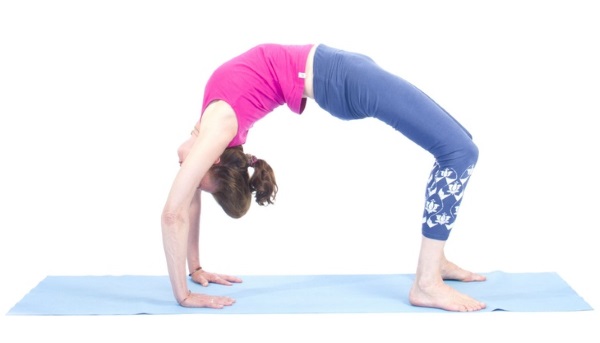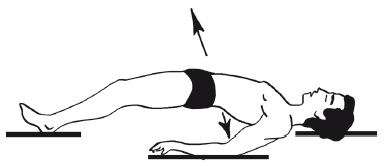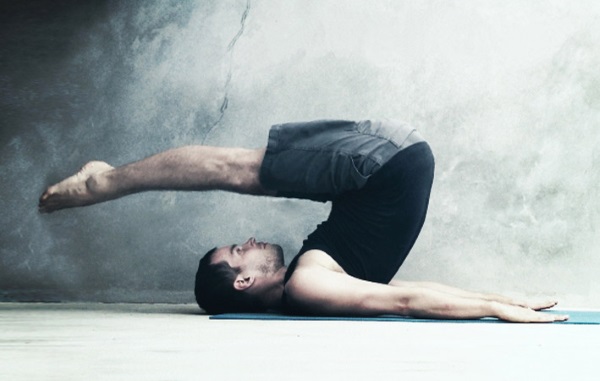The real scourge of 21st century civilization is a sedentary lifestyle. Curvature of posture, systematic back pain, the development of chronic diseases against the background of stagnation of salts between the vertebrae - these are just a few of the problems that arise due to the lack of daily physical unloading.
To maintain health, a person needs to exercise regularly. Yoga can quickly and effectively solve problems for the back and spine.
Causes of back pain
The symptoms of pain in the lumbar region and back are very diverse. Most often, people are worried about spasms, tingling, sensations similar to muscle stretching. Slightly less often there is a cutting, baking pain, which is of a sudden, episodic nature.
Any type of pain is due to a number of reasons:
- Development of diseases of the vertebral sections. The catalysts are osteochondrosis, the presence of a hernia, scoliosis and other curvature of the spine.
- Patients often suffer from osteoarthritis and protrusion. They arise from prolonged sitting.
- Dysfunction of the tissues of the spinal muscles. They receive the largest share of the stress from a sedentary lifestyle.
Yoga for the back and spine effectively treats cervical osteochondrosis - The defeat of the lumbar region under the influence of infectious diseases.
- Inflammation of the abdominal cavity and pelvic organs. This type of pain is accompanied by discomfort in the lumbar region.
- Curvature of posture combined with overweight. This provokes an uneven distribution of the load exerted on the bones, as a result of which the patient experiences discomfort.
The pain radiates to the legs, buttocks. Sometimes the reason is an irregular load or severe hypothermia. The main manifestation of unpleasant sensations occurs when leaning forward. The pain disappears when you return to the starting position.
Features of yoga for the back and spine
The main characteristic of this type of physical activity is the maximum concentration of one's attention and willpower on maintaining a stable position in a particular asana. The poses of the complex allow you to strengthen and rejuvenate the core of the whole body, to stretch the figure, make it fit, healthy and beautiful.
By systematically performing exercises, a person gradually learns to achieve relaxation of almost all the muscles of the body, as if falling into a dream, while being conscious.
In addition, arterial and blood pressure improves, the body gradually becomes more and more flexible and plastic. One of the most important features of yoga is the harmonious and natural removal of excess salts from the human body. As a result, the practitioner gets a healthy and strong body, even despite the daily sedentary lifestyle.
The effectiveness of classes
The constant practice of yoga has a healing effect not only on the back and spine, but on the entire body of the patient as a whole. Surgeons often prescribe such physical courses to patients, mainly as part of the treatment of diseases of the endocrine system and gynecological pathologies.
Yoga for the back and spine perfectly helps to cope with such vital functions that the body performs:
- Fast and timely elimination of toxins.
- Improving coordination of movements and work of the musculoskeletal system.
- Maintaining the health of the respiratory, genitourinary, renal, cardiovascular systems.
During the course, the tone of the legs, muscles of the upper and lower press improves. The gluteal muscles acquire volume and elasticity.
Indications for implementation
Yoga will be useful for both healthy and physically fully developed people and people suffering from certain diseases. It should immediately be stipulated that before doing the exercises, you should consult with your doctor.
First of all, asanas for the spinal section are shown to such people:
- Patients suffering from curvature of the vertebrae. These diseases include scoliosis, osteochondrosis, arthrosis, herniated disc.
- Patients suffering from prolonged psychological stress. Yoga practice can help you relax, tune in to a positive mood, and increase blood endorphin levels.
Yoga for the back and spine is practiced in a complex to combat chronic insomnia. Physical activity during exercise allows you to relax muscles, get rid of tension, overcome unpleasant pulling sensations both in the back and in other parts of the body.
Contraindications
Despite all its advantages, exercise complexes are not suitable for all people. Contraindications to yoga classes are divided into two categories - temporary and permanent.
There are times when yoga classes for the back and spine are constantly contraindicated. This usually applies to any set of exercises and is associated with certain physiological injuries and pathologies, both congenital and acquired.
| Permanent | Temporary |
| Any heart disease. Defects of the cardiovascular system are one of the most serious problems of the human body, in which it is necessary to be especially careful to give the body any kind of load. | Colds, especially those that are accompanied by an increase in body temperature. |
| Mental disorders are a serious handicap. Exercise can worsen the patient's morale if his psyche was initially unstable. | The recovery period after the surgery. |
| Oncological diseases. Before starting yoga, the patient should regularly attend the consultations of the attending physician, undergo examinations and carefully monitor that exercise does not provoke a sharp development of cancer cells. | Time of exacerbations of chronic diseases. |
| Individual pathologies, fragility of bones, inherent in people of advanced age. If a person decides to start practicing yoga at the age of 40 and beyond, the exercises should be selected very carefully. | A state of severe physical fatigue and other temporary phenomena in which a person is not able to fully and efficiently perform exercises. |
Each case is different. But if a person feels serious discomfort and pain in the back while doing yoga, it is better to leave these exercises and choose a sparing direction in sports for yourself.
General recommendations
Like any other sport, yoga has its own set of subtleties that help improve the technique of performing asanas.
Here is a list of tips that can dramatically improve your training efficiency:
- Since the practice of yoga implies the utmost concentration on one's own sensations, breathing and holding one position of the body, you need to be careful when choosing a place for training. It should be quiet so that nothing distracts from your workout.
- Correct work of the bronchi and lungs will directly affect the quality of the exercise, because shortness of breath and tachycardia will interfere with the correct performance of asanas. It is better if the person is engaged in the fresh air. In cases where this option is not possible, the classroom should be well ventilated.
- Workout clothes also need to be given due attention. It is optimal to choose a wide suit made of natural materials in order not to hinder movement.
- Ideally, the stomach is emptied during training. It is optimal to practice on an empty stomach. Before starting classes, you need to drink some water, empty the contents of the bladder and, if possible, the intestines.
- Carefully monitor your breathing! It should be free, smooth and natural. If the spine is turned incorrectly or the angle of the back is tilted, a sharp breath or, conversely, prolonged stress can serve as a catalyst for injury. Experts do not recommend holding your breath while doing yoga. Exceptions are special types of exercises.
- During exercise, you can additionally perform a rhythmic contraction of the pelvic muscles and gradually tighten the abdominal muscles to the surface of the spine.
- The diet is taken into account when drawing up a complex of asanas. You should not start doing yoga for about two hours after a light meal. If the meal was plentiful, you should abstain for five hours. The fact is that the stomach is located in the immediate vicinity of the vertebrae, therefore, an inappropriate exercise aimed at developing the back can lead to dangerous injuries to both the spine itself and the gastrointestinal tract.
Compliance with these simple rules will make the classes effective and will protect you from unwanted injuries. Do not neglect them.

 Don't miss the most popular column article: Morning exercises for those over 40, 50. Gymnastics exercises for weight loss, video tutorials.
Don't miss the most popular column article: Morning exercises for those over 40, 50. Gymnastics exercises for weight loss, video tutorials.A simple set of exercises
The cervical region often suffers from fatigue and flow. At the same time, there are not so many exercises for the cervical spine.
Here are some of the most effective (all exercises last ten deep breaths, as smoothly as possible):
- In a standard stance, a person tilts his head, trying to reach as low as possible with his chin to the thoracic region.
- Hands are extended above the head, the yogi tries to stretch his head up as long and high as possible. You need to alternate tension with relaxation, repeating the exercise three times.
- A prone position is taken. The right arm is extended at an angle of ninety degrees in relation to the body. In this case, the palm should be directed upward.
- From a standing position, the yogi leans forward as much as possible, while keeping the body as close as possible to the legs. Then the hands are joined behind the back, and the practitioner tries to pull them up as much as possible.
- Kneeling stand. Hands touch the heels. The practitioner tries to reach as far as possible with the chin to the chest, then stretches the chin up.
Yoga for the back and spine is able to unload the entire support frame of a person. Next, you should pay attention to the thoracic region.
Asanas will help not only effectively stretch the spine, but also eliminate problems with the respiratory system:
- Standing position. The yogi spreads his arms as smoothly and wide as possible, while at the end point he closes them behind his back. The exercise is performed while inhaling, while exhaling, the person returns to the starting position.
- The previous asana is performed, but at the stage of closing the hands behind the back, you need to slowly bend forward, while trying to take the closed palms as far forward as possible. Breathing is deep and free.
- Hands up to the elbow are placed on the wall. Such a stand is adopted so that the feet are as far as possible from the wall surface, and the back forms a horizontal plane.Then the head tilts down. After several deep breaths, the starting position is taken.
- The practitioner is kneeling. He raises his left hand, bends at the elbow and brings it as low as possible, sliding along the line of the spine. In this case, a person must form a lock from his hands, letting in the opposite one.
- The position is on all fours. The left hand stretches as far forward as possible, while the right hand along with the head is as far as possible. After two deep breaths, the asanas are performed in the other direction.
The last in the list, but far from the last in value, is a set of exercises aimed at working with the sacro-lumbar spine:
- A straight stand is taken, arms extended above the head. As you exhale, you need to bend over and touch your right leg, then return to the starting position while inhaling. Do the same with the left leg. Alternation to repeat a set number of approaches.
- The yogi takes the starting posture of the previous asana. On inhalation, the body of the body should be slowly turned to the right, on exhalation - to the left.
- The practitioner lies on his stomach, placing his palms on the sides of the chest. While inhaling, you should raise the body up, leaning on your hands. In this case, the head should be thrown back. Be sure to monitor your breathing and perform the exercise smoothly so as not to accidentally get injured.
- The right knee is bent, the foot of the right leg is placed on the floor on the outside of the knee of the left leg. The latter can be straight or bent at an angle of 90 degrees. The right hand is on the floor behind the tailbone. The left hand hugs the right leg, then slightly pulls up to the thoracic region. The exercise should be repeated five times.
- Starting position - kneeling and handstand. From it, a person should slowly rise with his pelvis up, while trying not to tear his feet and hands off the floor. Then the practitioner returns to the starting position. Breathing should be even and measured.
Back treatment with asanas
There is a complex of effective asanas for the back.
It is better to start its implementation strictly according to the list, gradually moving from easy to complex:
- Locust pose, or asanas of Shalabhasana... Its features are the strengthening of the back section, work on the abdominal muscles. In this case, the exercise is in the group of low risk of spinal injuries. The execution should be performed lying on your back, pulling your chest up, and your stomach, as it were, pressing it against the mat. In this case, the buttocks and legs should firmly rest on the floor.
- Pose of a dog with a raised muzzle - Urdha Svanasana. It contributes to the effective opening of the pectoral muscles, arms, and upper arm. Perfectly contributes to the correction of posture. From a prone position, the practitioner should bend as much as possible in the back using the extension of the arms. In this case, you must stretch your nose up and straight. Do not forget about measured deep breathing.
- Camel or Ushtrasana position. The main characteristic is a tonic effect on the entire body, in particular, unloading of the median vertebrae and the thoracic region. It is necessary for yoga, kneeling, to bend smoothly and fix the position, touching the feet with his hands.
- Bow position, aka standard Dhanuransana... The spine is stretched in it, salt stagnation is eliminated. In its execution, it resembles the previous one, but the movement is no longer performed on the knees, but from a prone position, while the hands are fixed on the feet at the beginning of the exercise.
- Bridge Position - Urdhava Dhanuransana... Its feature is the lengthening of the front side of the body and the active study of the entire spine as a whole. In fact, this is an ordinary children's bridge, only performed very smoothly, taking into account the peculiarities of breathing exercises for yogis.
After a couple of months of constant practice, you can amaze others with a truly royal posture. In addition, many health and well-being problems will disappear.
Vietnamese yoga
There is a very effective and effective set of yoga exercises for solving back problems - Duongshin, or the Vietnamese version.
Yoga of this type is intended exclusively for the treatment of the back and spine. A distinctive feature is the performance of all exercises in the supine position. In this case, the system has its own breathing characteristics, divided into 4 phases.
Here are the basic exercises:
- The practitioner actively presses his shoulder blades and feet to the floor, while trying to bend as much as possible in the spine. You need to linger in this state for twenty seconds, while you need to sway slightly from side to side and breathe measuredly.
- The second exercise is very similar to the first, but now it is necessary to also use the elbows, resting them on the floor. In this case, the abdomen must be directed downward, and the spine must be slowly directed in the opposite direction, that is, up.
- The yogi performs a simple bow tie, spreading his knees as far as possible to the sides, but lying down.
- It is necessary to smoothly raise straight legs to the ceiling, then just as slowly lower them behind your head. The result is a twisted posture that perfectly stretches the vertebrae.
- Now you need to spread your knees to the sides, while trying to raise the foot on your toes and push the pelvis forward. But do not overdo it - you can easily lose your balance and get injured.
The complex is extremely useful and suits almost all age categories. The time for its implementation is comparatively less than in other complexes of asanas.
Yoga classes for intervertebral hernia
A hernia between the vertebrae is formed with a systematic uneven load on the area of the intervertebral fibrous ring, which provokes a rupture of its membrane, and a part of the nucleus pulposus coming out.
Yoga for the back and spine makes it possible to get rid of this disease, but classes must be combined with the obligatory consultations of a surgeon. The main features of the complex for patients with hernia is the use of only asanas, which are as sparing as possible for the spinal section.
It is necessary to minimize the load on the back. The exercises are performed as smoothly as possible. The patient must listen very carefully to his body; at the first painful sensations, one must get out of the position.
Here are some recommendations for implementation:
- Do yoga only when there is no pain. Sport during exacerbations of the disease can lead to disastrous consequences.
- The effectiveness of asanas is increased if the yogi resorts to them in the early morning or late evening.
- No need to overwork.
- After class, you need to try to take the most relaxed position, and spend some time in it.
- It is strictly forbidden to train on a full stomach.
Opinions of doctors
The generalized opinion of doctors about yoga for the back and spine is as follows:
- Asanas are an excellent way to prevent back diseases and ease their course. Correctly selected complex and responsible performance of exercises can get rid of the disease.
- The therapy should consist of several treatments. Yoga must be combined with the medication prescribed by the surgeon. Do not forget about therapeutic massage.
- It should be borne in mind that muscle tension can both correct the existing problem and aggravate it. Everything needs to be approached wisely, with the support of a specialist.
Patient reviews
People on the Internet, for the most part, have a positive attitude towards yoga. For them, this is a whole philosophy of life. For many of them, asanas have helped to receive long-awaited relief, getting rid of chronic pain in the back. But do not forget that healing is a complex and lengthy process.
Yoga practitioners advise to be responsible for their health:
- Discuss the set of asanas with the doctor.
- Exercise systematically.
- Do not overwork.
- Eat properly and regularly.
- Combine exercise with prescribed medication.
- Adjust your lifestyle and daily routine.
Back pain is a debilitating and painful phenomenon that cannot be delayed with treatment. By following all these simple tips, you can relatively quickly correct the situation with the help of yoga. The back and spine will quickly regain their former flexibility, and you can forget about diseases of the spinal region.
Article design: Vladimir the Great
Video: Yoga for the back
Relief from back pain in 30 minutes:

